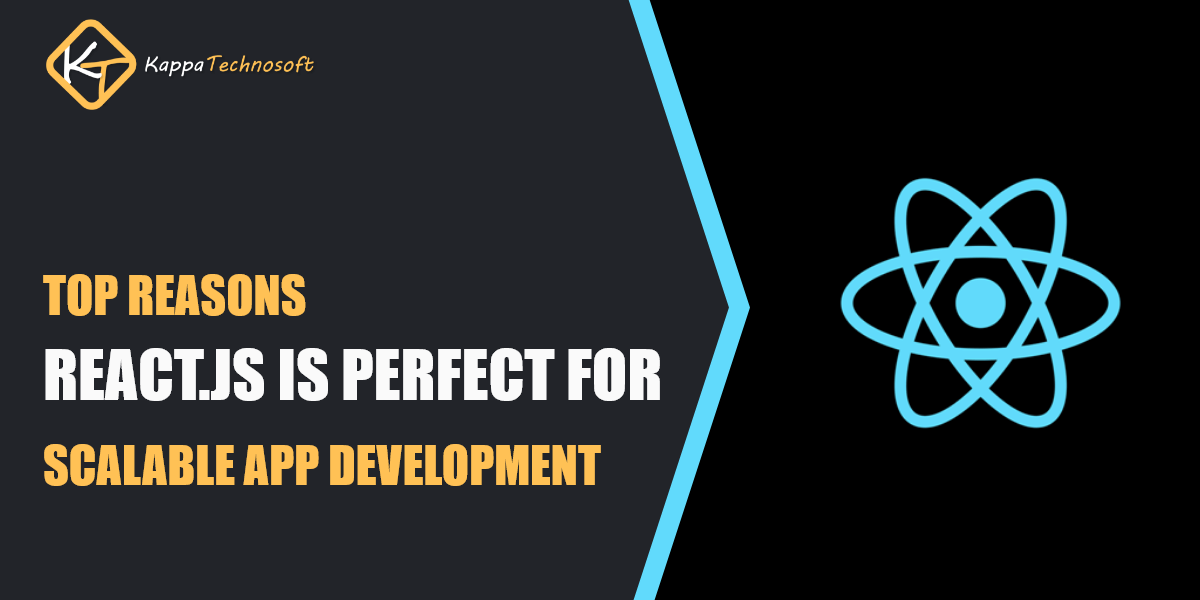
When building a digital product or web application, scalable app development with React should be a core part of your development strategy. As your business grows, your application needs to seamlessly accommodate increased traffic, new features, and evolving user demands—without sacrificing performance or reliability. That’s exactly where React.js excels, offering the flexibility and efficiency needed for long-term success.
React.js, an open-source JavaScript library developed by Facebook, has become one of the most popular tools for building modern user interfaces. Known for its flexibility, performance, and developer-friendly architecture, React is widely used by startups and enterprises alike—including giants like Netflix, Airbnb, and Instagram.
In this blog post, we’ll explore why React.js is the ideal choice for scalable app development and how it can help businesses future-proof their web applications.
1. Component-Based Architecture: Build Once, Use Everywhere
One of React’s most powerful features is its component-based architecture. It allows developers to create reusable, modular components that encapsulate their own structure and behavior.
This modularity means your team can:
- Reuse code across multiple parts of the app
- Maintain and update specific parts without affecting the entire application
- Collaborate easily on large codebases
For example, a button component used in dozens of places across your app only needs to be updated once. This results in cleaner code and faster development cycles—both critical for scaling.
2. High Performance with Virtual DOM
Traditional DOM manipulation can be slow, especially in large applications. React uses a Virtual DOM—a lightweight in-memory representation of the real DOM—that helps update the UI efficiently.
When changes occur, React compares the current Virtual DOM with the previous one and updates only the elements that changed. This process, known as reconciliation, ensures high performance and smooth rendering, even under heavy data loads.
This is essential for scalability, where performance issues can multiply as the app grows.
3. Strong Ecosystem and Community Support
React is backed by a vibrant community and an ever-growing ecosystem of tools, libraries, and extensions. Whether you need advanced state management, routing, or animation libraries, the React ecosystem has it all.
Some key tools include:
- Redux / Zustand – for managing complex app states
- React Router – for routing between pages
- Next.js – for SSR (Server-Side Rendering) and SSG (Static Site Generation)
- Formik and React Hook Form – for form management
The community ensures that bugs are quickly fixed, new features are regularly introduced, and best practices are widely shared—all of which contribute to building scalable applications.
4. Flexibility for Integration and Customization
React does not impose strict architectural rules, unlike some other frameworks. This gives developers the freedom to choose their stack—whether it’s REST APIs, GraphQL, or microservices.
You can easily integrate React with various backend technologies like Node.js, Laravel, Django, or even headless CMS platforms. This flexibility makes it easy to build micro frontend architectures or transition to more scalable setups as your project evolves.
5. Excellent for SEO and Performance (with Next.js)
Scalable apps not only need to perform well—they also need to be SEO-friendly to attract and retain users. React alone renders content on the client side, which can affect SEO. However, with frameworks like Next.js, you can:
- Implement server-side rendering (SSR)
- Generate static pages with Static Site Generation (SSG)
- Improve load times and performance
This approach is ideal for content-rich applications, eCommerce websites, and enterprise dashboards where SEO and performance are key.
6. Consistent Development with Reusability
React promotes consistent design and development through reusability. Your team can create a design system or component library that standardizes UI elements across the application. This leads to:
- A uniform user experience
- Faster development
- Easier onboarding of new developers
- Fewer design inconsistencies
Such consistency is crucial when managing large-scale projects across distributed teams or multiple products.
7. Strong Developer Tooling
React offers powerful tools that make development and debugging efficient:
- React Developer Tools – for inspecting components, props, and state
- Create React App – a boilerplate setup to kickstart your app quickly
- Vite & Webpack – for blazing-fast bundling and building
Efficient tooling increases developer productivity and reduces the chances of bottlenecks as your application and team size scale up.
8. Backed by Facebook and Used by Industry Leaders
React is actively maintained by Facebook and used in many of its products. This means regular updates, long-term support, and a focus on performance. Other tech leaders using React include:
- Netflix
- WhatsApp Web
- Dropbox
- Atlassian
- Uber Eats
These companies rely on React for scalability, reliability, and excellent user experience—further proving its strength as a frontend technology.
Final Thoughts
React.js is more than just a JavaScript library—it’s a powerful tool designed for scalable app development with React. Its modular architecture, high performance, and ability to integrate smoothly with other tools make it ideal for building fast, dynamic applications that can grow and evolve with your business needs.
Whether you’re a startup building your MVP or an enterprise scaling up your digital platform, React.js is a reliable choice that can evolve with your business.
Ready to build a powerful and scalable web application? Contact us today to get started!
